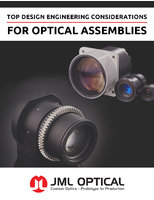Software delivers integrated thermal and EMC analysis.
Share:
Press Release Summary:
Integrated Analysis Environment addresses multiple aspects of physical design in one analysis environment. To save resources, software can convert full models into compact equivalents with same properties but no component or trace details. Auto-lumping feature reduces amount of memory required for simulation. Suite consists of Flo/PCB for conceptual thermal design of PCBs, FloTHERM for system-level thermal design and optimization of electronics systems, and Flo/EMC for EMC simulation.
Original Press Release:
Integrated Thermal/EMC Analysis Validates Space Heater Design
(September 27, 2005) -- Flomerics consultants substantially reduced the time required to design a sophisticated electric space heater using integrated thermal and electromagnetic compatibility (EMC) simulation software. The consultants began by generating a detailed thermal model of the board with all traces and components included. The model also included the plastic enclosure and aluminum heater. Compact models of many of the components were used in order to reduce modeling and simulation time. The thermal model predicted airflow and temperature throughout the enclosure, making it possible to consider cooling management prior to prototyping.
"As a manufacturer of heaters, our electronics is subject to strong thermal constraints, especially considering the fact that we use off-the-shelf components to stay competitive," said Phillippe Gay, of Atlantic Industrie, La Roche sur Yon, France. "Our challenge is therefore to optimize the circulation of fresh air in our plastic cases to provide excellent product life. Of course, it's very expensive to try and accomplish this goal at the end of the design process. Thermal and EMC simulation saves us time, while reducing the number of prototypes required and helping to get our products to market more quickly."
The EMC model leveraged the same geometry created for the thermal model to show the currents flowing through all of the components in the heater, highlighting the areas of the board that radiated over a wide frequency range and identifying zones where crosstalk occurred between traces. "The simulation showed that at each different frequency a different area of the board was radiating," said Yannis Braux, the Flomerics consultant that performed the EMC simulation. "This information, which proved invaluable from an EMC design standpoint, would have been impossible to obtain through physical testing."
"We took advantage of the "auto-lumping" feature which is part of Flomerics' Integrated Analysis Environment to reduce the amount of memory required for the simulation to 512MB RAM compared to 1.5GB RAM which would have been required with the old version," Braux added. Autolumping combines small computational cells to increase the density of the mesh in areas with high field gradients and reduce it in areas with low gradients, thus optimizing the tradeoff between analysis accuracy and speed.
Next, Braux converted the full board EMC model into an equivalent "compact" model that radiates exactly the same as the full board but occupies much less memory because it eliminates the component and trace details. This compact model was then mated with a model of the aluminum heater and plastic enclosure in order to simulate the emissions of the complete system according to EN65022 Class A specifications at 3 meters and 10 meters. Braux identified frequency peaks and produced E and H field maps at each frequency. The model identified two areas of coupling between the board and the chassis, a cable and a hole.
The Flomerics Integrated Analysis Environment consists of Flo/PCB for conceptual thermal design of printed circuit boards, FloTHERM for system-level thermal design and optimization of electronics systems, and Flo/EMC for electromagnetic compatibility (EMC) simulation. The new suite dramatically reduces design leadtime by addressing many different aspects of physical design in a single analysis environment, and eliminating communications barriers between the different people involved in the process.
"Simulation provided a clear picture of the emissions in much less time than would have been required to build and test a prototype," Braux said. "Being able to address thermal management and EMC issues within a single environment makes it possible for mechanical engineers to get a head start on the difficult design tradeoffs that are frequently required between these two disciplines. This keeps all team members in sync and enables them to contribute to concept development in real time."
For more information, visit Flomerics' Web site at www.flomerics.com




